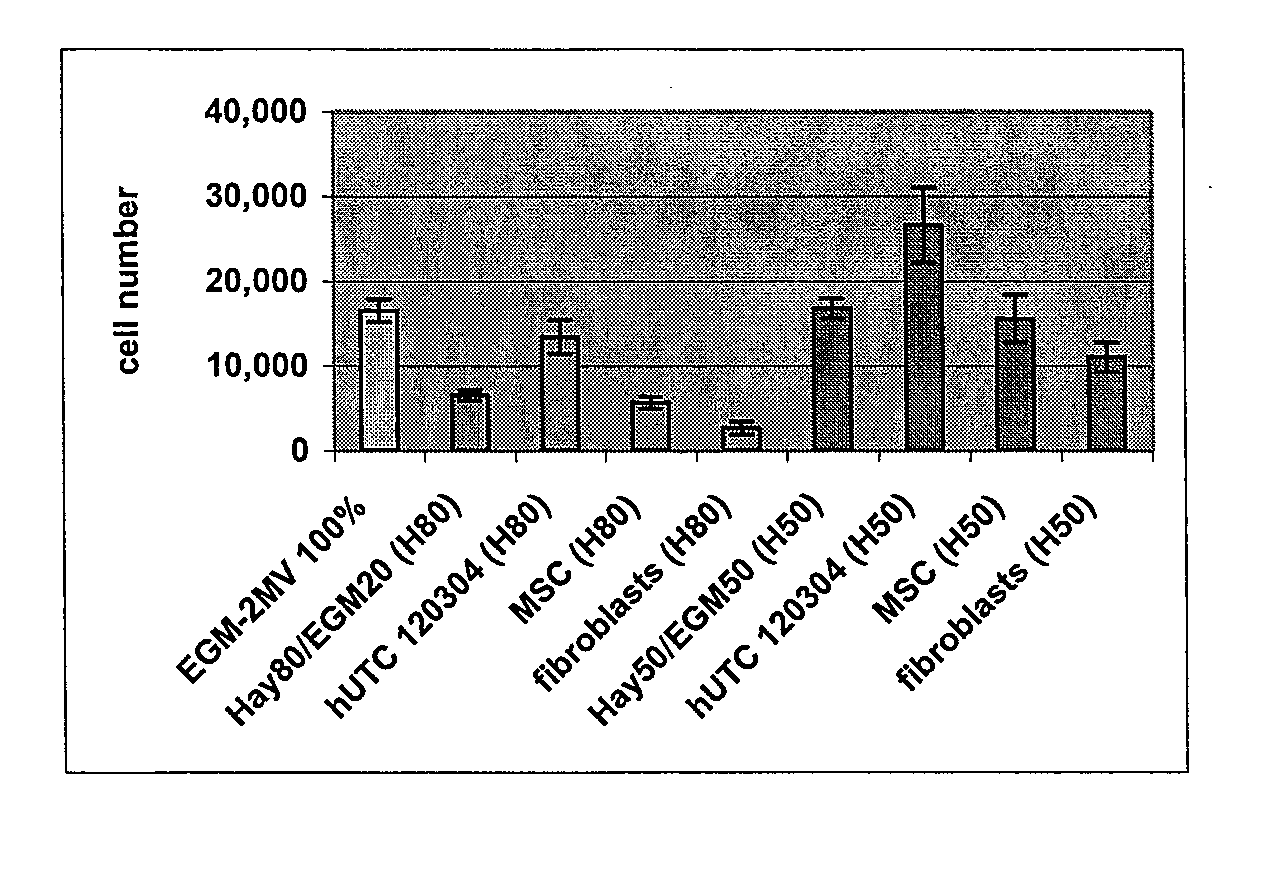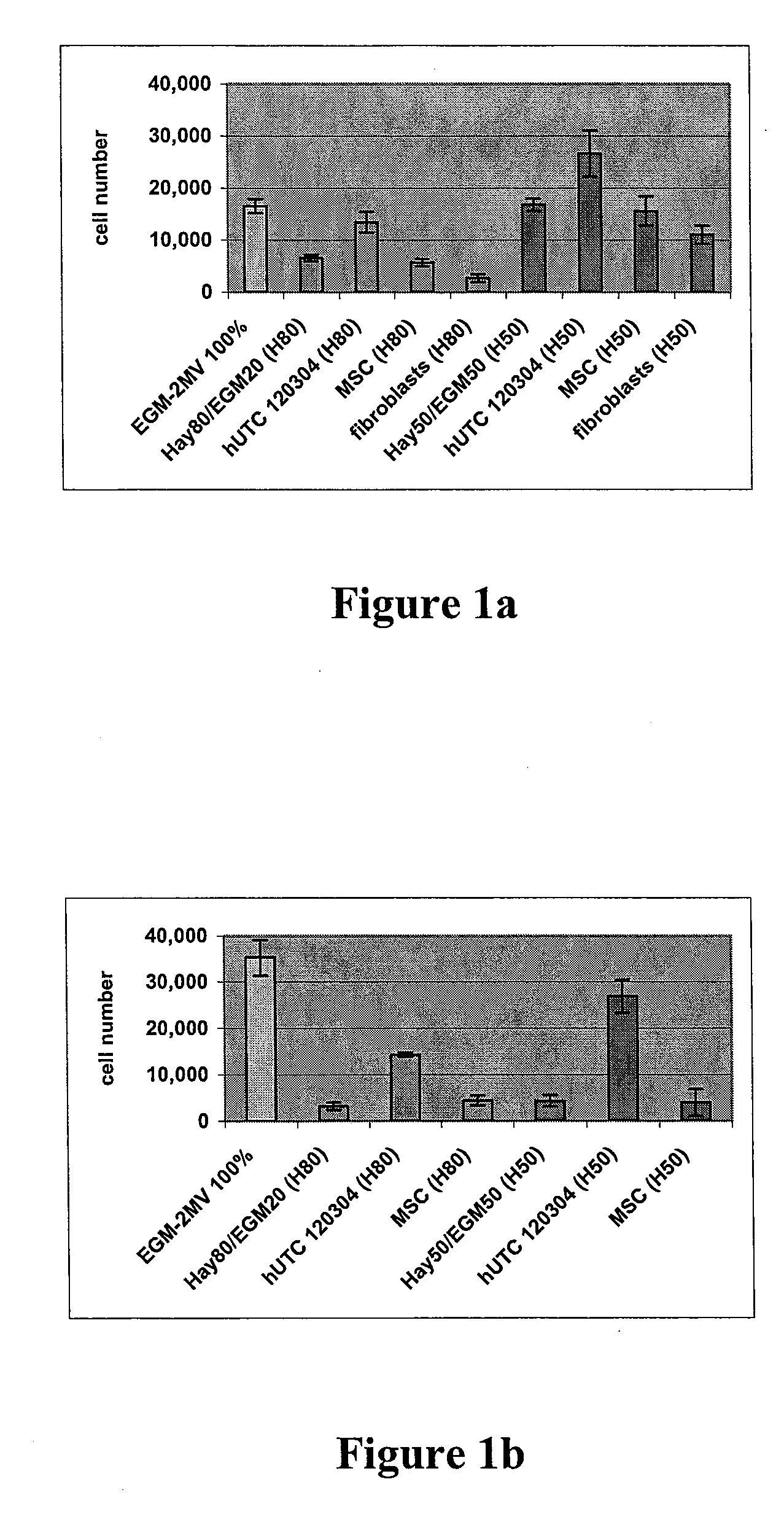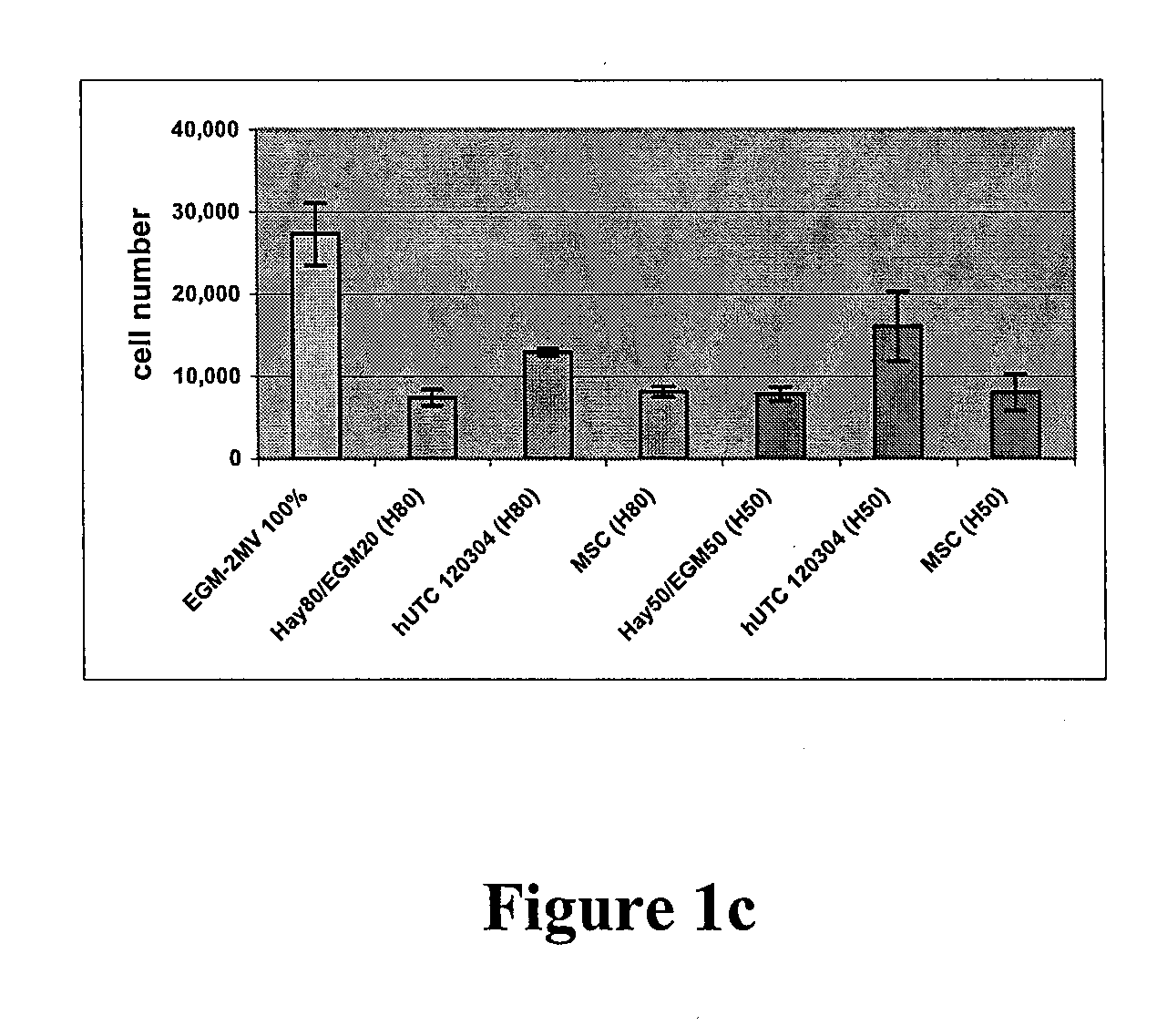Treatment Of Peripheral Vascular Disease Using Postpartum-Derived Cells
a technology of postpartum cells and peripheral vascular disease, which is applied in the direction of genetically modified cells, prosthesis, drug compositions, etc., can solve the problems of amputation of affected limbs, insufficient oxygen perfusion to tissues in the vicinity and downstream of the occlusion, and even death of patients
- Summary
- Abstract
- Description
- Claims
- Application Information
AI Technical Summary
Benefits of technology
Problems solved by technology
Method used
Image
Examples
example 1
Efficacy of Umbilicus-Derived Postpartum Cells in the Murine Hindlimb Peripheral Ischemia Model
Materials and Methods
[0133] Umbilical Cell Culture and Isolation. Umbilicus-derived cells (UDCs) were prepared as described in U.S. Patent Publications 2005 / 0058631 or 2005 / 0054098. Cells were cultured to passage 10 or 11 (approximately 20-25 population doublings) and then cryogenically preserved.
[0134] Ischemia Model Treatment Groups:
[0135] 1. PBS, negative control
[0136] 2. Expression plasmid for vascular endothelial growth factor (pVEGF), positive control
[0137] 3. cell line #1 cells, 5×105 cells total
[0138] 4. cell line #1 cells, 1×106 cells total
[0139] 5. cell line #2 cells, 1×106 cells total
[0140] 6. cell line #1 cells, cultured, 1×106 cells total
[0141] cell line 1: U120304 p10,
[0142] cell line 2: U072804A p11
[0143] Sample preparation for injection. Cells were thawed immediately before injection (groups 3-5), or were cultured for 24-30 hr (group 6). Cells were counted and ...
example 2
Endothelial Network Formation Assay
[0153] Angiogenesis, or the formation of new vasculature, is necessary for the growth of new tissue. Induction of angiogenesis is an important therapeutic goal in many pathological conditions. To identify potential angiogenic activity of the postpartum-derived cells in in vitro assays, a well-established method of seeding endothelial cells onto a culture plate coated with a biological cell culture substrate under the tradename MATRIGEL (BD Discovery Labware, Bedford, Mass.), a basement membrane extract (Nicosia and Ottinetti (1990) In Vitro Cell Dev. Biol. 26(2): 119-28) was followed. Treating endothelial cells on MATRIGEL (BD Discovery Labware, Bedford, Mass.) with angiogenic factors will stimulate the cells to form a network that is similar to capillaries. This is a common in vitro assay for testing stimulators and inhibitors of blood vessel formation (Ito et al. (1996) Int. J. Cancer 67(1):148-52). The experiments made use of a co-culture syste...
example 3
Effect if hUTCs on the in vitro Proliferation and Migration of Endothelial Cells
[0167] Studies were undertaken to determine the effects of human umbilical tissue-derived cells (hUTCs) on the proliferation and migration of endothelial cells in vitro. These effects were examined by co-culturing hUTCs and endothelial cells and by incubating cultures of human umbilical vein endothelial cells (HUVECs) with hUTC lysates. The results presented here show that hUTCs induce increases in proliferation and migration of endothelial cells. Furthermore, the data suggest that these effects are mediated, in part, by fibroblast growth factor (FGF) and hepatocyte growth factor (HGF).
Materials and Methods
Cell culture
[0168] Cryopreserved human umbilical tissue-derived cells (hUTCs) lot#120304 were thawed at passage 8-9 and seeded onto gelatin-coated flasks and cultured in Hayflick growth media (DMEM—low glucose [Gibco, catalog number 11885-084], 15% v / v fetal bovine serum [FBS, Hyclone, catalog nu...
PUM
| Property | Measurement | Unit |
|---|---|---|
| diameter | aaaaa | aaaaa |
| temperature | aaaaa | aaaaa |
| temperature | aaaaa | aaaaa |
Abstract
Description
Claims
Application Information
 Login to View More
Login to View More - R&D
- Intellectual Property
- Life Sciences
- Materials
- Tech Scout
- Unparalleled Data Quality
- Higher Quality Content
- 60% Fewer Hallucinations
Browse by: Latest US Patents, China's latest patents, Technical Efficacy Thesaurus, Application Domain, Technology Topic, Popular Technical Reports.
© 2025 PatSnap. All rights reserved.Legal|Privacy policy|Modern Slavery Act Transparency Statement|Sitemap|About US| Contact US: help@patsnap.com



